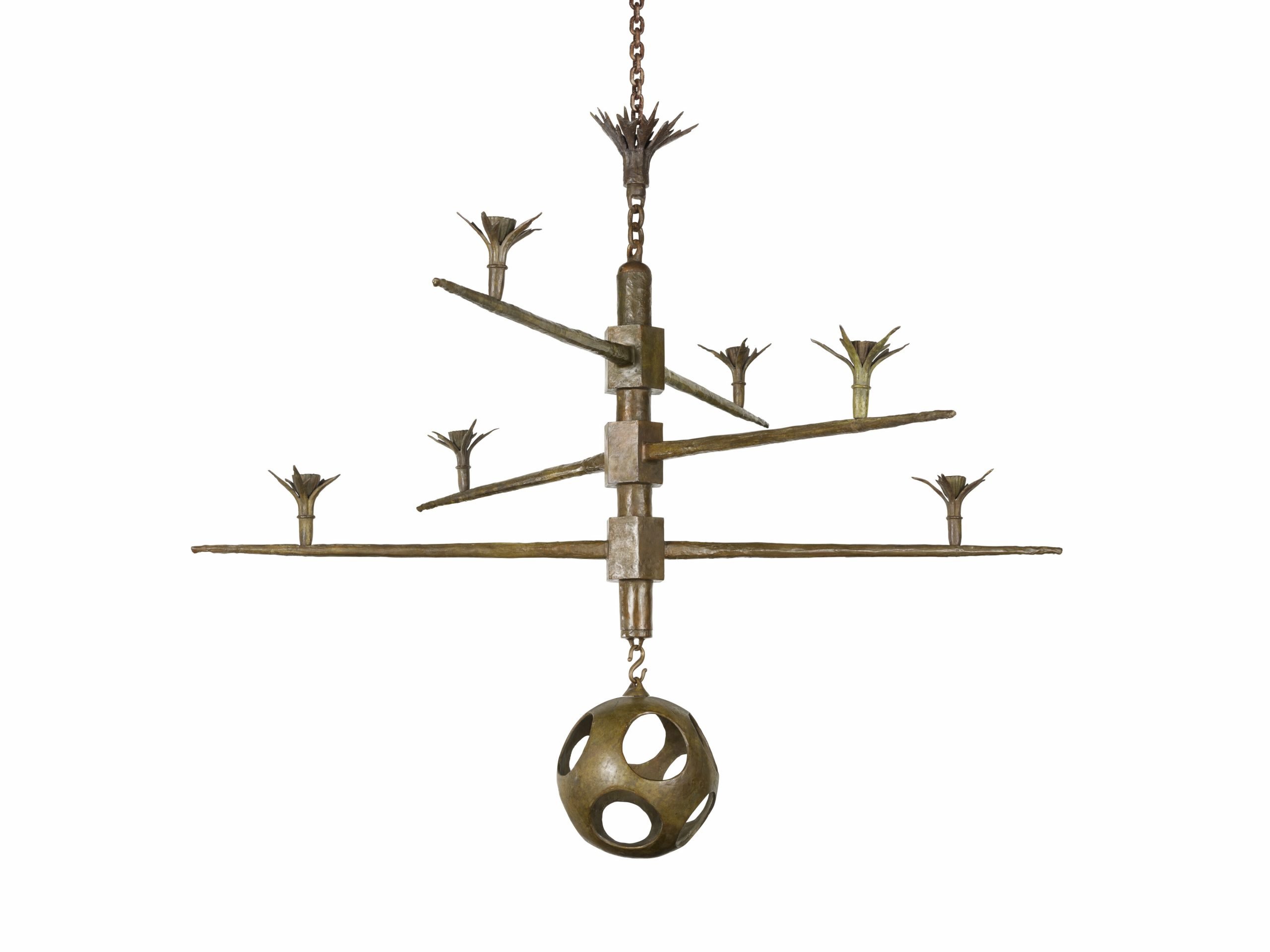
The U.K. is fighting to keep a unique bronze chandelier by Alberto Giacometti within its borders, issuing a temporary export ban to give a local institution a chance to match the £2.4 million ($2.9 million) purchase price on the work.
It’s a pretty penny—especially considering that the lighting fixture was just $700 when British painter John Craxton discovered it in a London antique shop in the 1960s. The artist was immediately aware of the significance of his find, as he recognized the work as having belonged to his late friend Peter Watson, an art collector and important midcentury patron of the arts in the U.K.
Watson commissioned Giacometti to create the chandelier for the London offices of his literary magazine, Horizon, in 1946 or ’47.
“Giacometti’s masterful exploration of space and use of bronze in this extraordinary chandelier provided a centerpiece for cultural discussion in post-war London as it hung in the offices of the avant-garde magazine Horizon,” Stephen Parkinson, Baron of Whitley Bay and the Arts and Heritage minister, said in a statement. “It is a prime example of sculptors blurring the boundaries between function and art in the decorative arts.”
Alberto Giacometti’s Chandelier for Peter Watson when it was hanging at artist John Craxton’s home. Photo courtesy of the Craxton Estate.
The publication shut down about a year after the work’s delivery, and Watson died in 1956. His former business partner, Cyril Connolly, likely inherited the chandelier, and from there it wound up at Denton Antiques on Marylebone Road, where Craxton snapped it up. (He died in 2009, and the Craxton estate sold the chandelier at the recent auction.)
The work sold to a foreign buyer at Christie’s “20th/21st Century: London Evening Sale” in February. The export ban from the Department for Culture, Media and Sport comes at the recommendation of Reviewing Committee on the Export of Works of Art and Objects of Cultural Interest (RCEWA), administered by the Arts Council England.
This is the second Giacometti sculpture to catch the committee’s eye in recent years. In 2016, the U.K. attempted to stop the overseas sale of Femme (1928–29), the only all-plaster piece by the artist in the nation, for £2 million ($2.9 million).
Despite what “a serious intention to raise funds to purchase the sculpture,” the Arts Council wrote in an email to Artnet News, a U.K. buyer never materialized and an export license for the piece was ultimately granted.
Alberto Giacometti Femme (1928–29). Photo courtesy of the U.K. Department for Culture, Media, and Sport.
The U.K. can issue export bans if an object of cultural significance has been in the country for over 50 years, exceeds the financial thresholds for an Open General Export Licence, and meets at least one of the three Waverley criteria, which evaluate an object’s connection with national history and life, its aesthetic importance, and its value to scholarship.
The RCEWA found that the chandelier—with its golden-brown patina, multi-layered armature, and dangling spherical shell—qualified on all three fronts.
First, there is the aesthetic importance and unique nature of the work, which is in excellent condition and representative of the European avant-garde art and decorative arts in the mid-20th century.
Then, there is Giacometti’s renown as a leading 20th-century sculptor, and the fact that this piece represent both a lesser-known facet of his practice, and a meeting of his Surrealist work and his more naturalistic decorative pieces.
Finally, the committee took into consideration the importance of Horizon magazine in shaping modern British painting, sculpture, and literature, as well as Watson’s own significance in the nation’s cultural history.
“[The chandelier] is an exceptional realization of Giacometti’s work in the decorative arts and is the only known U.K. decorative art commission by the leading 20th-century sculptor,” Andrew Hochhauser, a King’s Council lawyer and the RCEWA chair, added. “It offers outstanding opportunities for the study of this neglected area of Giacometti’s output and the meeting of European avant-garde art and decorative arts in the mid-10th century. I sincerely hope it can find a home in this country where it can be studied and enjoyed.”
The export ban will be in effect until at least November 12, possibly followed by a second four-month deferral period if there are any offers to match the auction price. The final purchase cost will also have to include a Value-Added Tax, or VAT, of £104,000 ($136,000). Museums and institutions that offer free admission are eligible for a VAT refund.
More Trending Stories:
An Israeli First-Grader Stumbled on a 3,500-Year-Old Egyptian Amulet on a School Trip